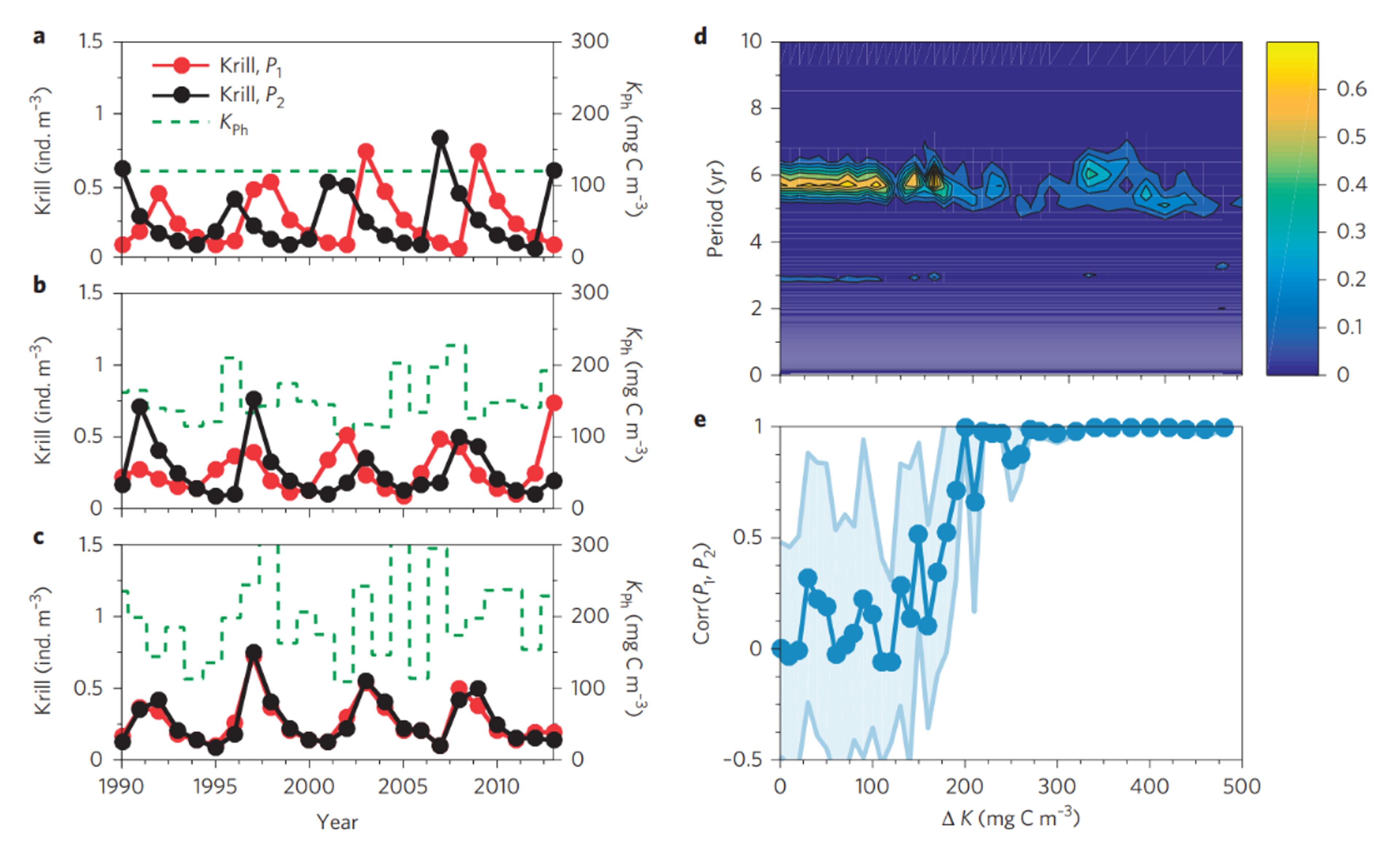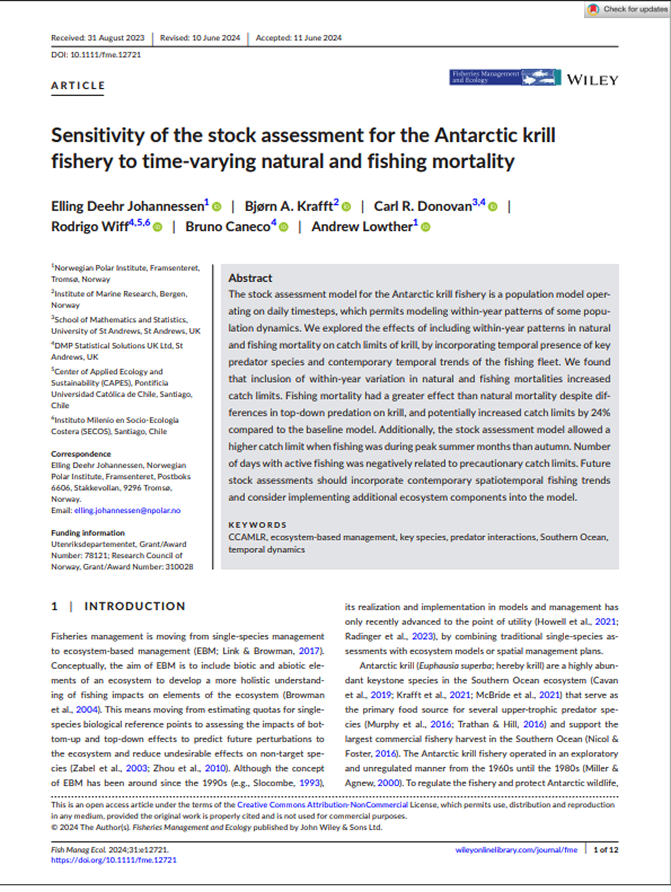Biomass
Fisheries management
Antarctic ecosystem
Climate
Krill (Euphausia superba)
Competition-induced starvation drives large-scale population cycles in Antarctic krill
Summary
This study reveals what drives the large population swings of Antarctic krill that occur every five to six years. Rather than being caused by climate changes, these cycles are primarily driven by krill competing with each other for food.The researchers used long-term data from the Palmer research program and created a mathematical model that tracks krill populations through their life stages. They discovered that krill create their own boom-and-bust cycle through competition for phytoplankton, their main food source.Here's how the cycle works: when krill populations are large, they consume most of the autumn phytoplankton. This leaves insufficient food for krill larvae, causing widespread starvation and poor recruitment of young krill the following year. Only when these dominant year-classes eventually decline can new generations of krill successfully establish themselves, restarting the cycle.The model also suggests an important ecological warning - if predation pressure on krill decreases (for example, from reduced whale or seal populations), these population cycles could become more extreme. Such amplified cycles could potentially destabilize the broader Antarctic marine ecosystem, since krill serve as a critical food source for many species including whales, seals, and penguins.This research shows that Antarctic krill populations are largely self-regulating through intraspecific competition, highlighting the complex internal dynamics that drive one of the ocean's most important species.

1
This figure shows how changes in algae (phytoplankton) availability affect krill population cycles and whether different krill populations move in sync with each other. The researchers simulated two separate krill populations (P1 in red, P2 in black) and tested what happens when both experience the same environmental changes. The green dotted lines show algae levels (KPh), and ΔK measures how much the algae availability varies.Key Findings
1
Intraspecific competition for food is the main driver of 5-6 year population cycles in Antarctic krill2
Autumn is identified as a critical bottleneck when food depletion leads to larval starvation when krill biomass is high 3
Environmental conditions modulate cycle phase and synchronization across regions 4
Decreased predation pressure on krill (e.g., from recovering whale populations) could increase oscillation amplitude and potentially destabilize the ecosystem 5
Krill cycles follow a pattern where two successive strong cohorts appear, followed by 3-4 years of reduced recruitment 

